Embark on a culinary journey to Japan with the timeless and beloved dish of Classic Tempura. Crisp, light, and bursting with flavor, tempura embodies the art of delicate frying and showcases the perfection of simplicity in Japanese cuisine. Originating from the Edo period, this iconic dish features lightly battered seafood, vegetables, and sometimes even fruits, creating a symphony of textures and tastes that delight the palate. In this gastronomic adventure, we delve into the intricacies of creating the perfect tempura—from selecting the freshest ingredients to mastering the art of frying. Join us as we uncover the secrets behind the allure of Classic Tempura in its purest form.

What are the benefits of Tempura?
Tempura, a beloved Japanese dish renowned for its light and crispy batter-fried goodness, presents a plethora of benefits beyond its irresistible crunch. This classic delicacy features a delicate coating of batter that encases an assortment of seafood, vegetables, or even fruits, providing a satisfyingly crunchy texture while preserving the natural flavors and nutrients of the ingredients. Rich in protein, vitamins, and minerals, tempura offers a well-rounded nutritional profile that caters to both taste and health-conscious individuals.
The cooking method of deep-frying in hot oil for tempura results in a quick cooking process that seals in moisture and prevents excessive oil absorption, ensuring a crisp exterior without greasiness. The airy and golden-brown exterior of tempura not only enhances the presentation but also signifies a harmonious balance of textures and flavors. Whether enjoyed as a standalone dish, a tantalizing appetizer, or a delightful accompaniment to udon or rice, tempura embodies a culinary experience that celebrates simplicity, elegance, and the art of deep-frying mastery, making it a timeless favorite in Japanese cuisine.

Step into kitchen right now!!! Let’s try Tempura together!!!
Step 1:Prepare the Dipping Sauce
In a small saucepan, combine the dashi, soy sauce, mirin, and sugar. Bring to a gentle boil over medium heat, stirring until the sugar is dissolved. Remove from heat and set aside.

Step 2:Prepare the Tempura Batter
In a large bowl, lightly beat the egg with ice-cold water. Add the all-purpose flour and cornstarch (if using) to the egg mixture. Stir very gently and briefly, just until combined. The batter should be lumpy and not over-mixed. This helps to create a light and crispy texture.

Step 3:Heat the Oil
In a deep frying pan or pot, heat vegetable oil to 350°F (175°C). You can use a thermometer to check the temperature or drop a small piece of batter into the oil. If it sizzles and rises to the surface immediately, the oil is ready.

Step 4:Prepare the Ingredients
Pat the vegetables and seafood dry with paper towels to remove excess moisture. This helps the batter stick better and prevents splattering during frying.

Step 5:Fry the Tempura
Dip each piece of vegetable or seafood into the batter, allowing any excess to drip off. Carefully place the battered pieces into the hot oil. Fry in small batches to avoid overcrowding the pan, which can lower the oil temperature. Fry until the tempura is light golden and crispy, about 2-3 minutes for vegetables and 2-4 minutes for seafood. Remove the tempura with a slotted spoon or wire skimmer and drain on a paper towel-lined plate.

Step 6:Serve
Arrange the tempura on a serving platter. Serve immediately with the dipping sauce (tentsuyu) on the side.

In the realm of culinary delights, the journey through the flavors of Classic Tempura reaches its exquisite conclusion. With each crispy bite, this iconic Japanese dish transports the palate to a realm of lightness and satisfaction, harmonizing textures and tastes in a symphony of culinary bliss. As the final piece of tempura is savored, one cannot help but appreciate the artistry and simplicity that defines this beloved dish. From the selection of fresh ingredients to the precise frying technique, crafting perfect tempura is both a skill and an art. Let the legacy of Classic Tempura continue to inspire culinary exploration and delight the senses with every delicate crunch.
Print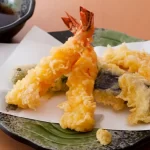
Classic Tempura
- Total Time: 35minutes
Description
Tempura, a beloved Japanese dish renowned for its light and crispy batter-fried goodness, presents a plethora of benefits beyond its irresistible crunch. This classic delicacy features a delicate coating of batter that encases an assortment of seafood, vegetables, or even fruits, providing a satisfyingly crunchy texture while preserving the natural flavors and nutrients of the ingredients. Rich in protein, vitamins, and minerals, tempura offers a well-rounded nutritional profile that caters to both taste and health-conscious individuals.
Ingredients
For the Tempura Batter:
- 1 cup all-purpose flour
- 1 large egg
- 1 cup ice-cold water
- 1/4 cup cornstarch (optional, for extra crispiness)
- Ice cubes (to keep the batter cold)
For the Tempura Dipping Sauce (Tentsuyu):
- 1 cup dashi (Japanese soup stock)
- 1/4 cup soy sauce
- 1/4 cup mirin (sweet rice wine)
- 1 teaspoon sugar
For the Tempura:
- Assorted vegetables (sweet potato, zucchini, eggplant, bell peppers, mushrooms, etc.), cut into thin slices or strips
- Assorted seafood (shrimp, squid, white fish), cleaned and deveined
- Vegetable oil for frying
Instructions
Step 1:Prepare the Dipping Sauce
- In a small saucepan, combine the dashi, soy sauce, mirin, and sugar.
- Bring to a gentle boil over medium heat, stirring until the sugar is dissolved.
- Remove from heat and set aside.
Step 2:Prepare the Tempura Batter
- In a large bowl, lightly beat the egg with ice-cold water.
- Add the all-purpose flour and cornstarch (if using) to the egg mixture. Stir very gently and briefly, just until combined. The batter should be lumpy and not over-mixed. This helps to create a light and crispy texture.
Step 3:Heat the Oil
- In a deep frying pan or pot, heat vegetable oil to 350°F (175°C). You can use a thermometer to check the temperature or drop a small piece of batter into the oil. If it sizzles and rises to the surface immediately, the oil is ready.
Step 4:Prepare the Ingredients
- Pat the vegetables and seafood dry with paper towels to remove excess moisture. This helps the batter stick better and prevents splattering during frying.
Step 5:Fry the Tempura
- Dip each piece of vegetable or seafood into the batter, allowing any excess to drip off.
- Carefully place the battered pieces into the hot oil. Fry in small batches to avoid overcrowding the pan, which can lower the oil temperature.
- Fry until the tempura is light golden and crispy, about 2-3 minutes for vegetables and 2-4 minutes for seafood.
- Remove the tempura with a slotted spoon or wire skimmer and drain on a paper towel-lined plate.
Step 6:Serve
- Arrange the tempura on a serving platter.
- Serve immediately with the dipping sauce (tentsuyu) on the side.
Equipment
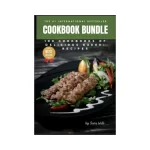 Buy Now →
Buy Now → 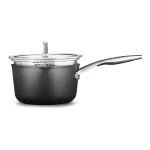
Calphalon Premier Hard-Anodized Nonstick 3.5-Quart Sauce Pan with Lid
Buy Now →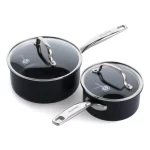
GreenPan Prime Chatham 1QT & 2QT Saucepan Pot Set with Glass Lids
Buy Now →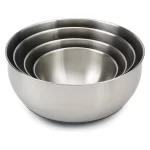
Joseph Joseph Nest 100 Prep & Store Mixing Bowl Set
Buy Now →
Make 75% commission with Cooking Tips!
Buy Now →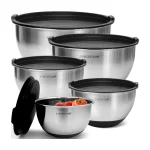
Priority Chef Premium Stainless Steel Mixing Bowls
Buy Now →
Quick and Deliciously Healthy Recipes
Buy Now →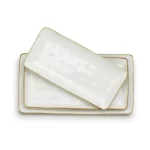 Buy Now →
Buy Now → Notes
- Keep the batter cold by placing the bowl over a larger bowl filled with ice cubes.
- Do not over-mix the batter; it’s okay if it’s lumpy.
- Maintain the oil temperature for consistent results. If the oil temperature drops, the tempura may become greasy.
- You can also use store-bought tempura batter mix for convenience.
- Prep Time: 15minutes
- Cook Time: 20minutes
- Category: RECIPE,HEALTH,Dinner,Asia
-
How can you achieve a light and crispy batter when making Tempura without it becoming too oily?
To achieve a light and crispy Tempura batter that is not greasy, ensure that the batter is kept cold by using ice-cold water and chilling the batter briefly before use. Use a neutral oil with a high smoke point, such as vegetable or canola oil, and maintain a consistent oil temperature of around 350-375°F (180-190°C) throughout the frying process. Fry the Tempura in small batches to prevent overcrowding the oil, which can lead to an uneven and oily finish.
-
How can you prevent the ingredients in Tempura from becoming soggy while frying?
To prevent the ingredients in Tempura from becoming soggy during frying, ensure they are thoroughly dried before dipping them in the batter. Lightly coat the ingredients in a thin layer of cornstarch or flour before dipping them in the batter to absorb excess moisture and create a crispier coating. Fry the Tempura quickly in hot oil, making sure not to overcrowd the frying vessel, and drain the cooked pieces on a wire rack or paper towels to allow excess oil to drip off.
-
How can you maintain the temperature of the oil while frying Tempura for consistent and even cooking?
To maintain the temperature of the oil while frying Tempura and achieve consistent and even cooking, use a deep-fry thermometer to monitor the oil temperature accurately. Adjust the heat as needed to keep the oil within the recommended range of 350-375°F (180-190°C). Avoid adding too many ingredients to the hot oil at once, as this can cause the temperature to drop rapidly. Allow the oil to return to the optimal temperature between batches and use a slotted spoon or spider strainer to remove any bits of batter or food debris that may affect the oil's temperature.

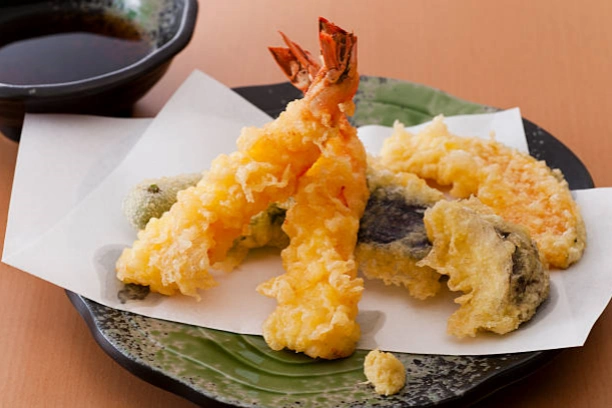



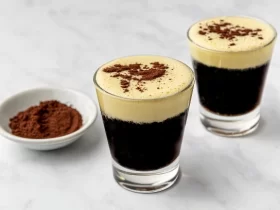

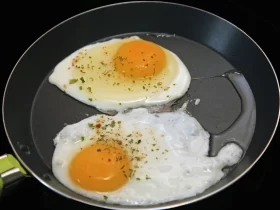
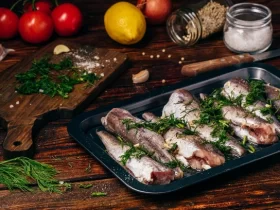
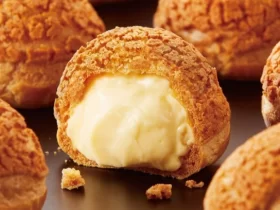
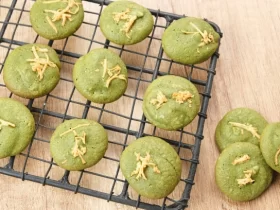

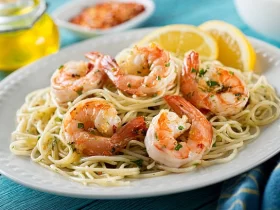

Leave a Reply